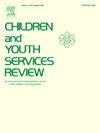School absenteeism during menstruation among adolescent girls in Southern Uganda: A multi-level risk factors analysis
IF 1.7
2区 社会学
Q1 FAMILY STUDIES
引用次数: 0
Abstract
Menstrual hygiene management (MHM) continues to be a major barrier impacting adolescent girls’ school attendance in low-income countries. In Uganda, only 10 % of adolescent girls practice adequate MHM; and they miss an estimated 11 % of school days due to menstruation. Missing school (school absenteeism) has been associated with negative educational and social outcomes. This paper aimed to explore the individual, family, school and community-level factors associated with school absenteeism among adolescent girls during menstruation. We used crosssectional (baseline) data from 1,237 adolescent girls recruited from 47 secondaryschools in Southern Uganda. The nested logistic model analysis was used to test the significance of blocks of predictor factors on school absenteeism. The results showed that all blocks of factors are statistically significant. Discrete analysis indicated that dysmenorrhea was associated with an 8.1 % increase in school absenteeism. However, family sufficiency and support appeared to be protective factors decreasing absenteeism by 13.8 % and 4.9 %, respectively. Also, both schools’ good water, sanitation, and hygiene (WASH) infrastructure and supportive teachers were associated with decreasing school absenteeism by 28.6 % and 4.6 %, respectively. Inaddition, cultural taboos on menstruation were associated with the strongest (34.3 %) increase in school absenteeism. Our results showed that all blocks of factors matter when discussing MHM and school absenteeism among adolescent girls. Therefore, more multifaceted interventions are needed to address the issue affecting millions of girls regularly.
乌干达南部少女经期缺课:多层次风险因素分析
经期卫生管理仍然是影响低收入国家少女上学的主要障碍。在乌干达,只有10%的青春期女孩进行了适当的母婴护理;而且她们因月经缺课的天数约为11%。缺课(旷课)与负面的教育和社会结果有关。本研究旨在探讨影响青春期少女经期缺课的个人、家庭、学校和社区因素。我们使用了从乌干达南部47所中学招募的1237名少女的横断面(基线)数据。采用嵌套logistic模型分析检验预测因子块对旷课的显著性。结果表明,各块因子均具有统计学显著性。离散分析表明痛经与学校缺勤率增加8.1%有关。然而,家庭充足性和支持似乎是减少缺勤率的保护性因素,分别为13.8%和4.9%。此外,两所学校良好的水、环境卫生和个人卫生(WASH)基础设施和支持性教师与学校缺勤率分别下降28.6%和4.6%有关。此外,与月经有关的文化禁忌与学校缺勤的增加最为相关(34.3%)。我们的研究结果表明,在讨论MHM和青春期女孩的学校缺勤时,所有的因素都有影响。因此,需要采取更多方面的干预措施,定期解决影响数百万女童的问题。
本文章由计算机程序翻译,如有差异,请以英文原文为准。
求助全文
约1分钟内获得全文
求助全文
来源期刊

Children and Youth Services Review
Multiple-
CiteScore
6.30
自引率
6.10%
发文量
303
期刊介绍:
Children and Youth Services Review is an interdisciplinary forum for critical scholarship regarding service programs for children and youth. The journal will publish full-length articles, current research and policy notes, and book reviews.
 求助内容:
求助内容: 应助结果提醒方式:
应助结果提醒方式:


